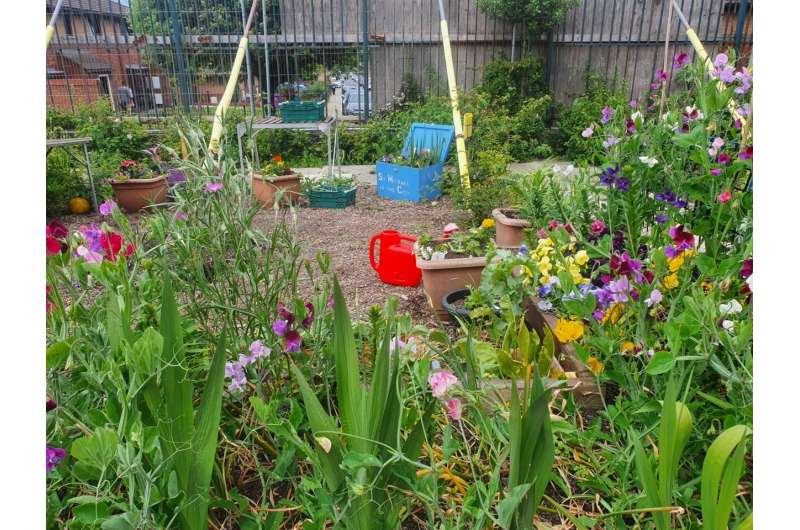Urban crops can have higher yields than conventional farming

As urban populations boom, urban agriculture is increasingly looked to as a local food source and a way to help combat inequitable food access. But little is known about how productive urban agriculture is compared to conventional, rural farming. A new study digs in, finding urban gardeners and hydroponics can meet and sometimes exceed the yields of rural farms.
“Despite its growing popularity, there’s still quite a lot we don’t know about urban agriculture, like whether the yields are similar to conventional agriculture, or even what crops are commonly grown,” says Florian Payen, an environmental scientist at Lancaster University and lead author of the study, published today in AGU’s journal Earth’s Future.
The new study compiles studies on urban agriculture from 53 countries to find out which crops grow well in cities, what growing methods are most effective, and what spaces can be utilized for growing. The researchers find that urban yields for some crops, like cucumbers, tubers and lettuces, are two to four times higher than conventional farming. Many other urban crops studied are produced at similar or higher rates than in rural settings. Cost efficiency remains an open but important question.
Most studies on urban agriculture have focused on green spaces, such as private and community gardens, parks and field growing operations. Payen’s work includes “gray” spaces—places in cities that are already built but could be used for growing, such as rooftops and building facades. In both green and gray spaces, the study examines a suite of crops grown in soils versus hydroponics, horizontal versus vertical farming, and natural versus controlled conditions.
“Surprisingly, there were few differences between overall yields in indoor spaces and outdoor green spaces, but there were clear differences in the suitability of crop types to different gray spaces,” Payen says. Certain crops like lettuces, kale and broccoli are more naturally suited to be grown vertically in indoor spaces than others. “You can’t exactly stack up apple trees in a five- or ten-layer high growth chamber,” he says, “though we did find one study that managed to grow wheat stacked up like that.”
Other crops, like watery vegetables (e.g., tomatoes) and leafy greens, performed well in hydroponic environments. And crops grown in fully controlled environments can be grown throughout the year, allowing harvests to happen more times per year than in open-air environments, which leads to higher annual yields. But scientists will need to keep studying these systems to plan cost-effective agriculture solutions.
The finding that urban agriculture can have similar or greater yields to conventional agriculture “is exactly what we have been waiting for in the urban agriculture research community,” says Erica Dorr, an environmental scientist at AgroParisTech who was not involved in the study.
Growing data
Current estimates suggest that between 5% to 10% of legumes, vegetables and tubers are grown in urban settings, and between 15% to 20% of global food is produced in cities. But getting a handle on just how much food a city could produce for itself is difficult without yield information like the data presented in Payen’s study. Payen and his collaborators are part of an interdisciplinary team building evidence and understanding of the value of urban growing for food security, health and the environment.
“This is the first step,” says Payen. Once scientists have accurate estimates for urban crop yields, they can map out a city’s potential growing areas and calculate how much food could be produced there. “That’s the strength of this dataset, for planners and policymakers to be able to see if it’s worth it to invest in rooftop gardens or greenhouses, for example, or if hydroponic systems would be better.” Future studies could also use the data to estimate cities’ potential to meet future food demand and the likelihood that cities could be self-sufficient in terms of food productions.
The lack of data has at times held up progress in implementing effective, functional urban agriculture.
“As we engaged and talked with different stakeholders, such as government agencies and local councils, we realized that the absence of robust, comprehensive data on urban agricultural yields was preventing them from going ahead and supporting the development and implementation of urban food growing,” Payen says. “We need to understand realistically how much this form of growing could contribute to food security to help make the business case for it.”
Scaling up is also a key point for Dorr. “What percent of a city’s vegetable and fruit consumption can urban agriculture provide? Studies have already estimated this, but with lower-quality yield data than this new study provides. But, we need to consider not just how much food could be produced, but at what environmental cost.”
It remains to be seen whether growing food in cities has a smaller or larger overall carbon footprint than conventional agriculture; the answer likely varies. Researchers are also studying how foods grown in cities might be impacted by pollution. And some crops included in the study’s literature review lacked the numbers to be included in statistical analyses, pointing to a need for more research on urban crops like fruits and cereals.
Systematic review of literature on the socio-cultural benefits of urban agriculture
Florian Thomas Payen et al, How much food can we grow in urban areas? Food production and crop yields of urban agriculture: A meta‐analysis, Earth’s Future (2022). DOI: 10.1029/2022EF002748
Citation:
Urban crops can have higher yields than conventional farming (2022, August 23)
retrieved 23 August 2022
from https://phys.org/news/2022-08-urban-crops-higher-yields-conventional.html
This document is subject to copyright. Apart from any fair dealing for the purpose of private study or research, no
part may be reproduced without the written permission. The content is provided for information purposes only.
For all the latest Science News Click Here
For the latest news and updates, follow us on Google News.

